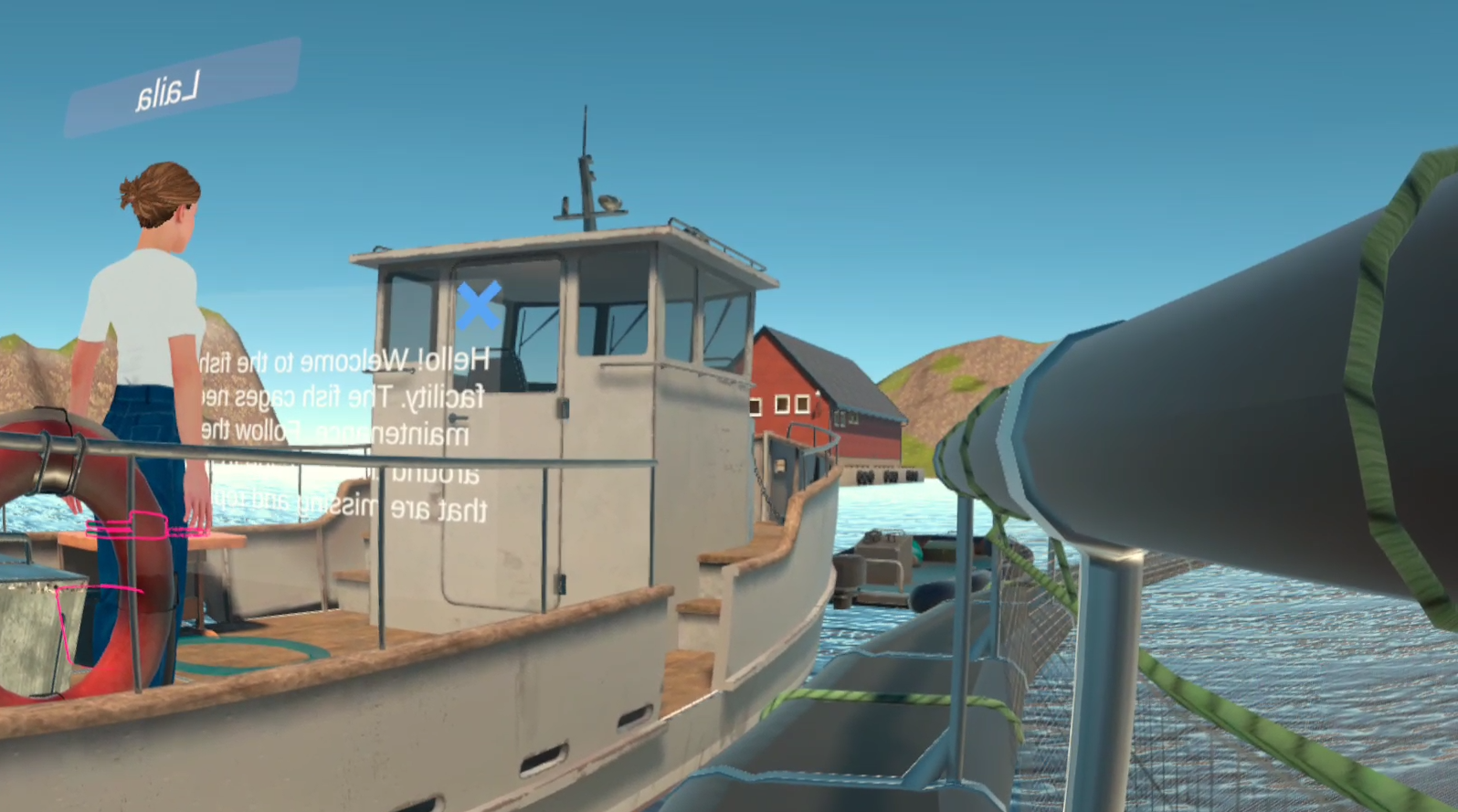Marine Cage Site
content
content
Net integrity check content
Water turbidity check content
Oxygen level check content
Obtaining a water sample content
Removing dead fish content


When the salmon are ready to be transferred to the sea, they are kept in cages usually situated in sheltered sea locations. Routine measurements of relevant environmental parameters must be carried out to monitor the cage conditions and welfare of the fish.
In this scenario you will carry out routine husbandry tasks relevant to salmon aquaculture such as checking net integrity, transferring fish into the cage and clearing dead fish.
Net integrity check
Net integrity check
- The integrity of the net of the pen is vital to containing the salmon and preventing escapes.
- Fish farm escapees pose a risk to wild salmon stocks causing disease and genetic changes of the wild population

Water turbidity check
Water turbidity check
- A Secchi disk has alternating black and white quadrants and is lowered into the salmon cage until it can no longer be seen from the surface.
- The point at which the disk disappears gives us information on the turbidity (cloudiness) of the water. This cloudiness can be caused by suspended particles in the water such as algae, or sediment.
- High levels of turbidity can effect the growth of the fish. Reduced visibility may impact feeding and limited light penetration may reduce oxygen and nutrient availability due to decreased photosynthesis.
Oxygen level check
Oxygen level check
- Maintaining high oxygen levels is important for successful aquaculture, once it gets too low fish appetite decreases and the fish could be at risk of death.
- Low oxygen levels could be a sign of there being high levels of plankton in the water.
Obtaining a water sample
Obtaining a water sample
- A special net can be used to take a water sample. As water washes through it, organisms will be caught in the mesh and washed down into the bottom tube.
- Samples can be observed under a microscope to give an idea of the species present. You will get a chance to analyse a water sample under a microscope in the laboratory scenario of the Blue Sector VR app.
Removing dead fish
Removing dead fish
It is important to remove dead fish from the marine cage to prevent diseases through spread of bacteria and viruses and to ensure maximum hygiene. This is a daily procedure. The dead fish sink naturally to the bottom of the cages where they are sucked into a cone shaped device and up through a tube for removal.